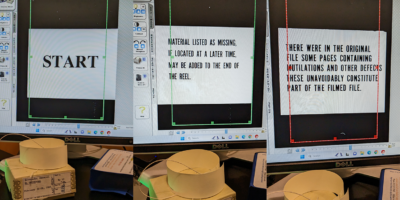By Jesse Rappaport
After five years of teaching at CUNY colleges, I thought I had everything figured out. Then, I was assigned my first hybrid course at Baruch College: Philosophy 1600, Logic and Moral Reasoning. A hybrid course is one which, by mandate, does not meet in person for at least 1/3 of the classes. I had never taught an online course, and now I was being asked to teach a new subject, using a course design that was completely foreign to me.
My first reaction was a simplistic one: so, it’s two thirds of the work for the same pay? It seemed like a gift. The previous instructor also offered to let me use the instructional videos he had painstakingly prepared for his students. So, I decided to accept the offer.
However, once it came time to prepare the course, things didn’t go so smoothly: my predecessor had relied on an expensive, proprietary textbook and software package to structure the course, and as I began to review the textbook, I found that it presented the material in a strange order, starting with some difficult concepts right at the beginning. I considered putting up with this problem, but I was also opposed to using a costly textbook for ethical reasons (the subject of another recent post on the site). So, in the end, I decided to throw away the previous curriculum and materials and start fresh. I was lucky enough to have the freedom to do whatever I wanted with the course, and so I decided to take it, caution be damned!
I began by deciding on the set of skills that I wanted the students to master by the end of the course. Since logic is a fairly technical discipline (it’s a bit like mathematics), it was easy to decide on some discrete, testable skills that I would set as my goal. Specifically, I decided that the class should introduce students to the basic concepts of logic, including validity, consequence, fallacies, etc., as well as symbolic propositional logic (the ability to analyze and evaluate arguments in symbolic form).
As an instructor, I find that one of the hardest things to manage is timing, so I often prefer to rely on a flexible syllabus. If the students are really enjoying a particular topic, why not keep the discussion going another week? However, I knew that this approach would not work for my hybrid course. Since I would only see them about once a week, I couldn’t rely simply on face-to-face interactions to guide my decisions about timing. Also, I wanted to convey the sense that everything had been carefully planned, to motivate them to keep up with the assignments for our online sessions. To create the necessary structure while also retaining flexibility, I decided to divide the course material into three units, each of which would culminate in an exam; not only would this add modularity to the course, it would also provide students with access to early and regular feedback on their progress.
For the online classes, I was lucky to find a great YouTube channel with clear, concise animated videos discussing various logical concepts. The channel does not have many views, but the quality was comparable to that of the videos that came with the expensive textbook/software package—and much more entertaining! Some professors might balk at the idea of assigning YouTube videos to cover important course material, but there are many brilliant people sharing knowledge on the internet.
I admit I, too, was somewhat skeptical that students would be able to acquire the necessary information from the videos (accompanied by readings and homework). But so far it seems to be working! The classes have been lively, with good, probing questions, and the homework responses show that students are picking up the material.
Furthermore, a surprising effect has been that the hybrid course design kind of intensifies the in-person classes. Students know that they are only going to interact with me once a week, so they are more actively engaged in listening and asking questions than they might otherwise be. In effect, shortening the amount of classroom time adds a sense of urgency to the class, which can motivate students to be more involved.
The amount of preparation I put into the course has certainly been paying off, and the course demands less of my weekly time than an ordinary class. However, what I learned is that the “free” time you get from having fewer class meetings is paid for in advance, in preparation time. Don’t think you can go into a hybrid course and just wing it!
I suppose I won’t know for sure how well my plan is working until I grade the first midterm, but so far, it hasn’t been a total disaster. In fact, it’s been going rather well. Perhaps it is the best of both worlds?
Jesse Rappaport is a doctoral candidate in Philosophy and a Contributing Writer to Visible Pedagogy.









George Orwel
I agree with whatever you’ve said here. I’ve been teaching at City Tech now for 9 years, and I find that every semester is different, every class is different, and as much as I prepare ahead of time, what I end up teaching very much depends on events beyond my control, such as how students react to my initial comments, whether there are interruptions or silence or behavioral issues and being mindful of time. The other issue is that I seem to find issues with most text books, so I’ve resorted to designing a curriculum from an amalgam of sources depending of topics. This makes it harder and more expensive but in the end I prefer it. While I’ve bought all the books and videos I use, my concern is how to share it with students—I can provide copies so they don’t have to buy the book, but I’m having ethical issues with despite copyright exceptions for research and education.
Miguel Valderrama
The amount to available material on subjets realted to any class are increasing very quickly. You may have to adapt your assignments to these new materials and it could ended up being a completely new assignment. If this assignment is neceasary to access or process the materials that follow up in the class. Special atention needs to be pay to the chain of reactions that introducing new material can bring with it.